Finding Frank at the Book Fair
A bonus, unscheduled post prompted by my opening-day visit to the 65th Antiquarian Booksellers’ Association of America’s New York International Antiquarian Book Fair
Yesterday was my fifth visit to the ABAA New York International Antiquarian Book Fair, the annual event that takes place every April (minus 2021) at the Park Avenue Armory. Five visits hardly makes me an expert on the trade, but given my interest in architecture books I’ve started see the repetition in what booksellers offer in that subject. Architecture books are a niche in the wider book marketplace, and that situation is amplified at a four-day event where most attention is given to big-dollar items in literary first editions, rare ephemera, leather-bound antiquarian books, old art books, and just about anything else but architecture. As I noticed in 2020, 2022, 2023, and 2024, the most valuable architecture books tend to be famous names (Giovanni Battista Piranesi, Le Corbusier, Walter Gropius, Rem Koolhaas, etc.) and/or prized first editions, such as the hardcover Learning from Las Vegas and large-format Delirious New York—all the better if they’re signed. I’ve seen these and a few other famous or familiar architecture books each spring I return to the fair, making me wonder why collectors aren’t snatching them up, if booksellers feel like architecture books aren’t worth including in their offerings, and if there will ever be any more architectural surprises on display. By chance, this year saw me finding a couple lesser-known titles by a famous Frank: Frank Lloyd Wright.
Wright made many books in his lifetime, but his most famous is still his first monograph, the so-called Wasmuth Portfolio. Consisting of 100 plates in two volumes, Ausgefübrte Bauten und Entwürfe von Frank Lloyd Wright was published by Ernst Wasmuth in Berlin in 1910. Although I didn’t come across a rare and very expensive first edition (complete copies go for around $70,000 online), the booth of Waccabuc, New York’s Appledore Books had a second issue of it from 1924 sitting on a shelf alongside a couple other Wright publications. This Wasmuth is a relative steal at $6,500, but given that the second version is different than the first in notable ways—it is one volume instead of two and is about half the size of the first—it is not as coveted. The relative importance of the first edition can be grasped in Appledore’s pricing of a “very scarce” 1910 prospectus for it at $3,000—nearly half the price of a second edition, just for a tiny pamphlet! Appledore’s label for the item indicates that the 1910 portfolio sold for $32; this may sound like a bargain, but that is the equivalent of around $1,000 today. This makes the new $150 Wright monograph just published by Phaidon seem reasonable.
The second-edition Wasmuth and first-edition prospectus weren’t the highlight at Appledore Books. It was The House Beautiful, an 1896–97 book featuring an essay by William C. Gannett on pages decorated by Wright. It was released by William Herman Winslow’s Auvergne Press in an edition of 90 numbered copies signed by both Wright and Winslow. Appledore was selling number 37 of 90, in a specially made green case, for $35,000:
Note the assertion that number 37 was Frank Lloyd Wright’s mother’s copy. How did they know? I asked Bryan Bilby of Appledore, and he showed me the signature of Anna Lloyd Wright at the front of the book:
Nice, but I was more impressed with the decorative page design, which features Wright’s Prairie Style borders around the text, very reminiscent of William Morris. My copy of Robert L. Sweeney’s handy Frank Lloyd Wright: An Annotated Bibliography points out that William Gannett’s name is misspelled on the title page as Gannet. Alas, that is the case with #37:
A few more photos inside the beautiful The House Beautiful:
Want this book but don’t have $35,000 to spend on it? Sweeney’s book indicates that a facsimile edition was published by W. R. Hasbrouck—the esteemed preservation architect, editor of Prairie School Review, and proprietor of Prairie Avenue Bookshop—in 1963.
The second Wright book that caught my attention was published much later, in 1956, a few years before Wright died at the age of 91. Wright’s The Story of the Tower: The Tree That Escaped the Crowded Forest, published by Horizon Price, is a monograph on Price Tower, the 19-story skyscraper in Bartlesville, Oklahoma. A signed copy was being sold by Wadsworth, Illinois’s Jeff Hirsch Books:
Before discussing the tower and the book’s contents, I can’t help but wonder what the monetary difference is between a signed and unsigned first edition. I’m not sure of any hard and fast rules over such pricing, but since Hirsch happens to be selling both on his website, it appears to be a factor of ten: $250 for the unsigned first edition, and $2,500 for the signed first edition. Where did Wright sign this copy? None other than inside the distinctive red block on the front free endpaper:
While I was not familiar with The Story of the Tower before coming across it yesterday, I’m somewhat familiar with Price Tower, or at least as familiar as I can be without actually having visited. Famous as Wright’s only high-rise—or at least the only freestanding one, setting aside the tower at Johnson Wax—the tower has a tree-like structure with reinforced-concrete floors cantilevering from a central service “trunk,” and it is wrapped in copper louvers, copper parapets, and gold-tinted glass. The tower has been in the news since last summer, when its latest owner closed the hotel and other functions in the tower and was set to put it up for auction. Some legal issues intervened and earlier this year the owner filed for bankruptcy. So next month Price Tower is being auctioned off, with minimum bids starting is $1,539,286.04. That’s the equivalent of twenty first-edition Wasmuth portfolios—a steal!
As can be seen in the interior spreads here, The Story of the Tower is a more conventional book than The House Beautiful or other prized Wright books, but the current story of the tower makes it bubble to the top in terms of importance, at least in my mind. Some of the recent controversy over Price Tower has been around the sale of Wright-designed furniture and other features inside the tower to pay off expenses, with liens and lawsuits resulting from those sales. But the book shows how, like all of Wright’s buildings, Price Tower is a Gesamtkunstwerk, a total work of art that should be preserved in its entirety. Hopefully the new owner will do so, perhaps using The Story of the Tower as a guide.
The ABAA New York International Antiquarian Book Fair is at the Park Avenue Armory April 3–6, 2025.

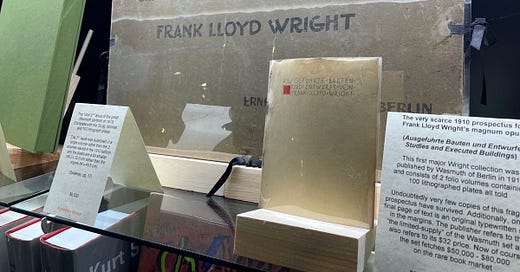



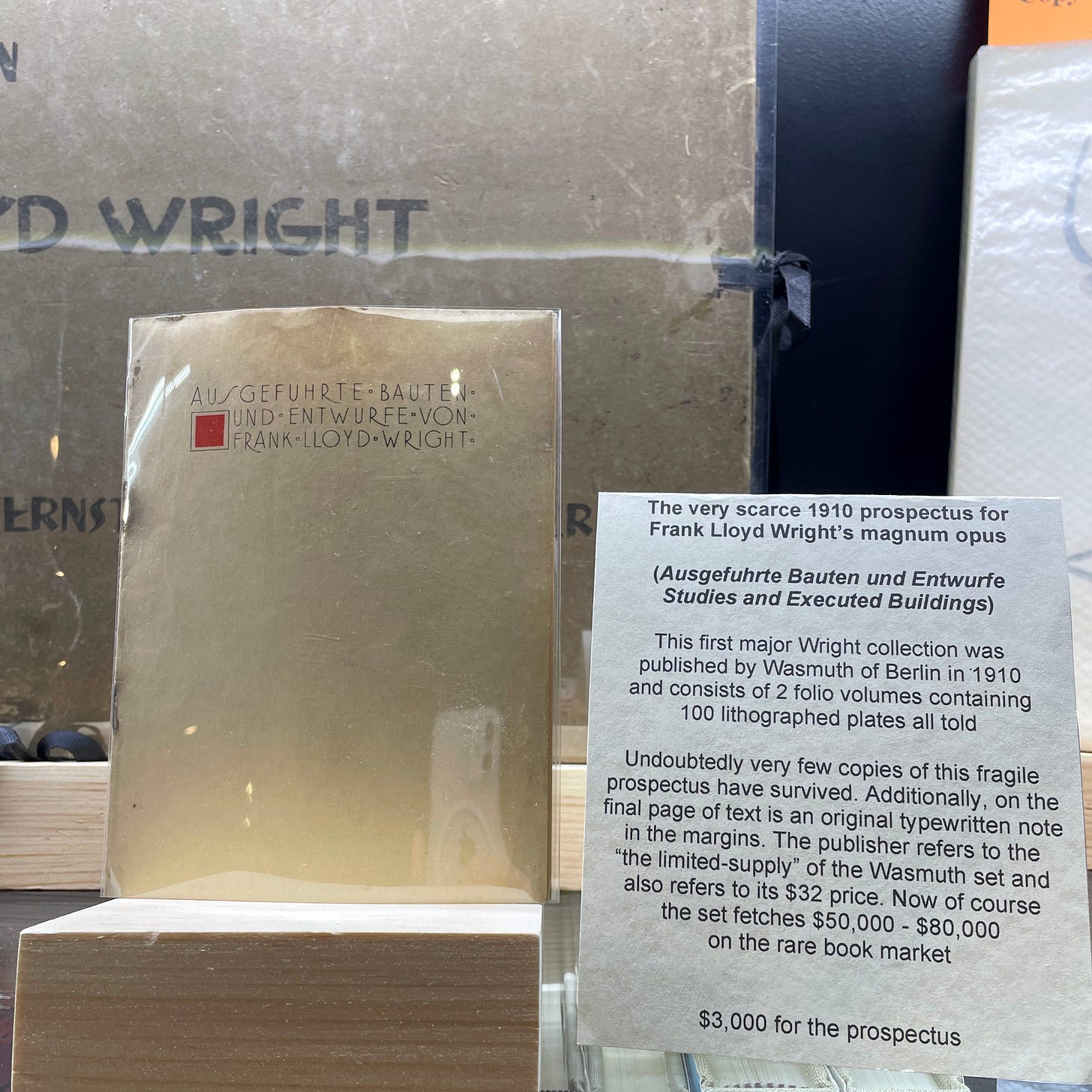

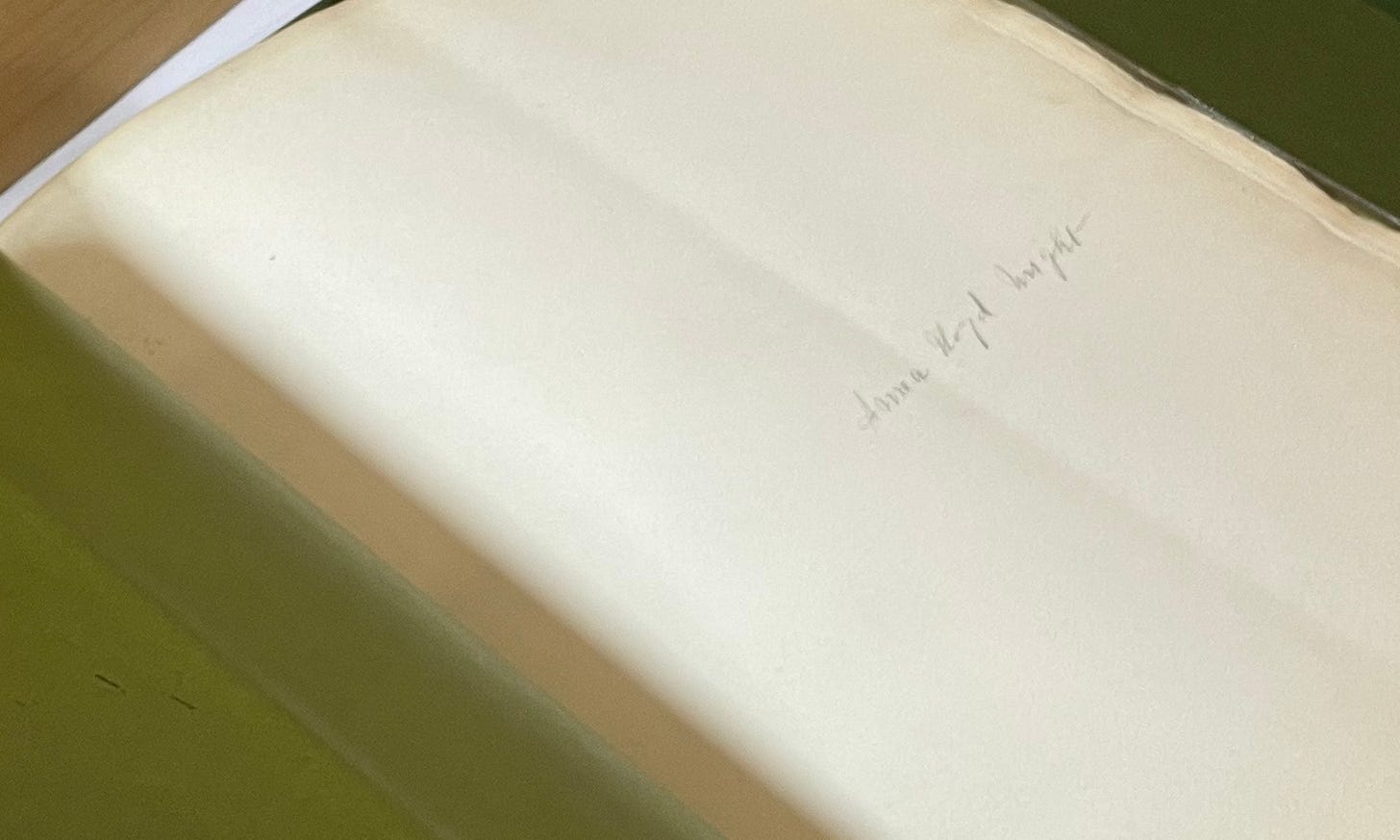
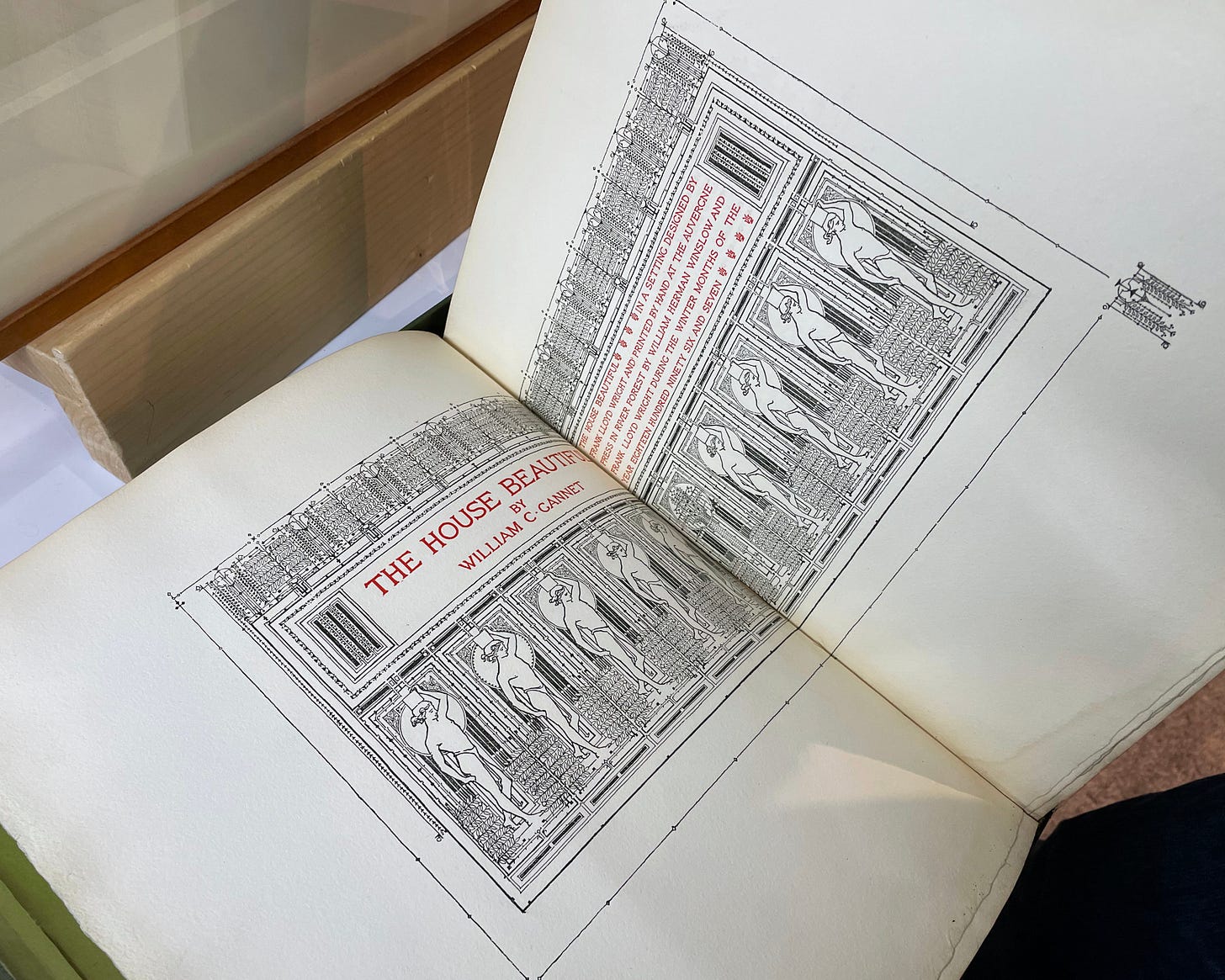
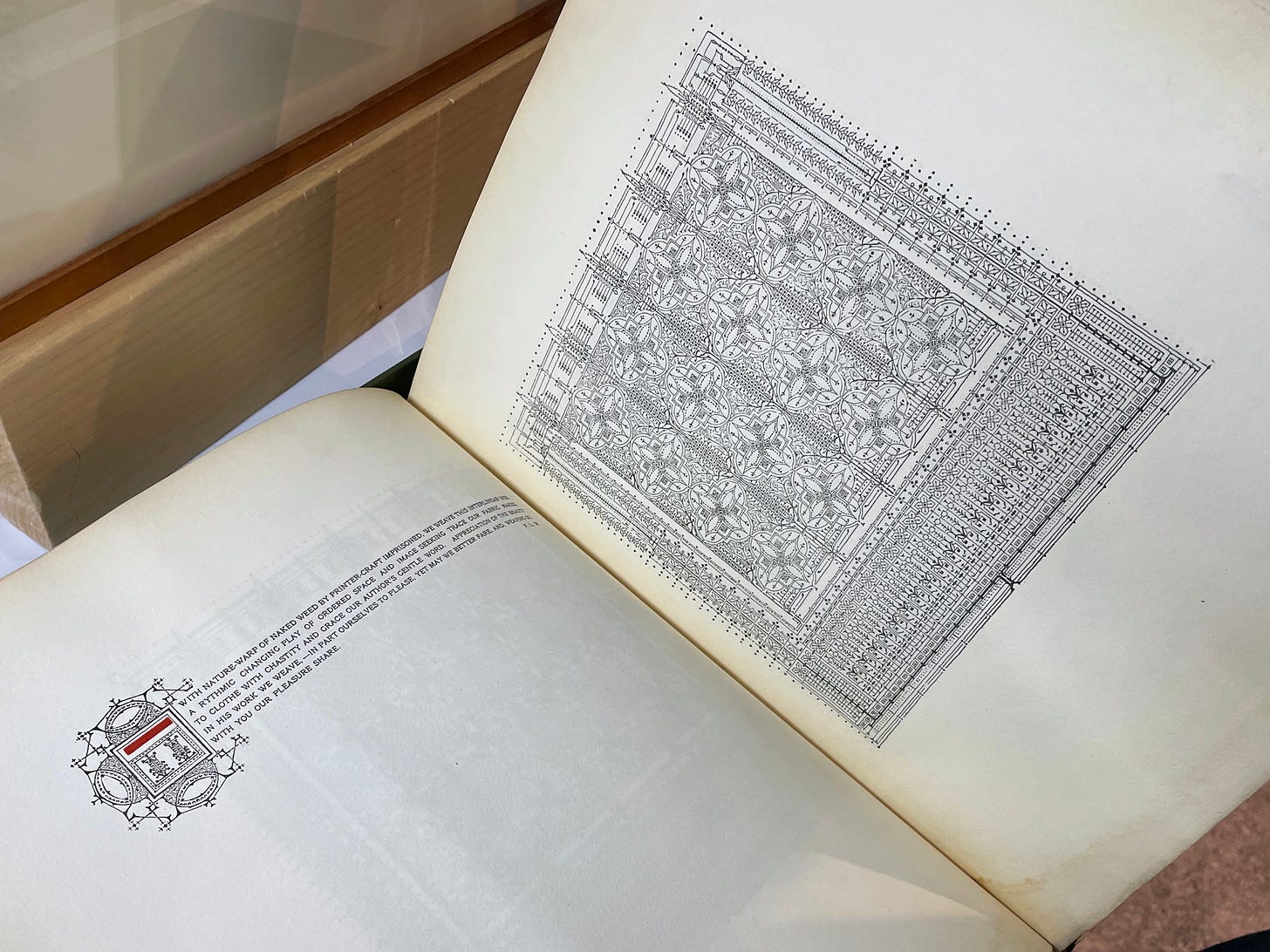
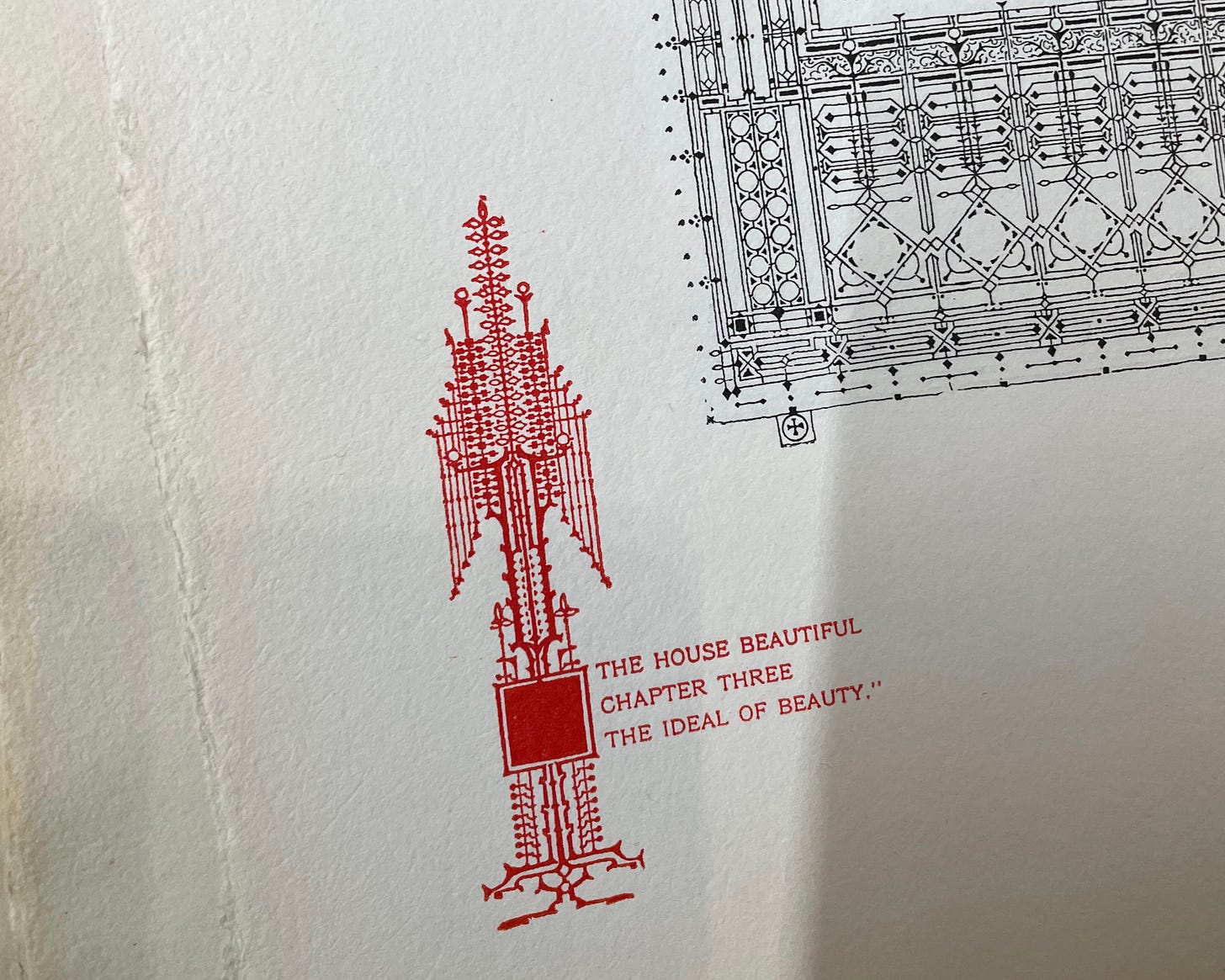
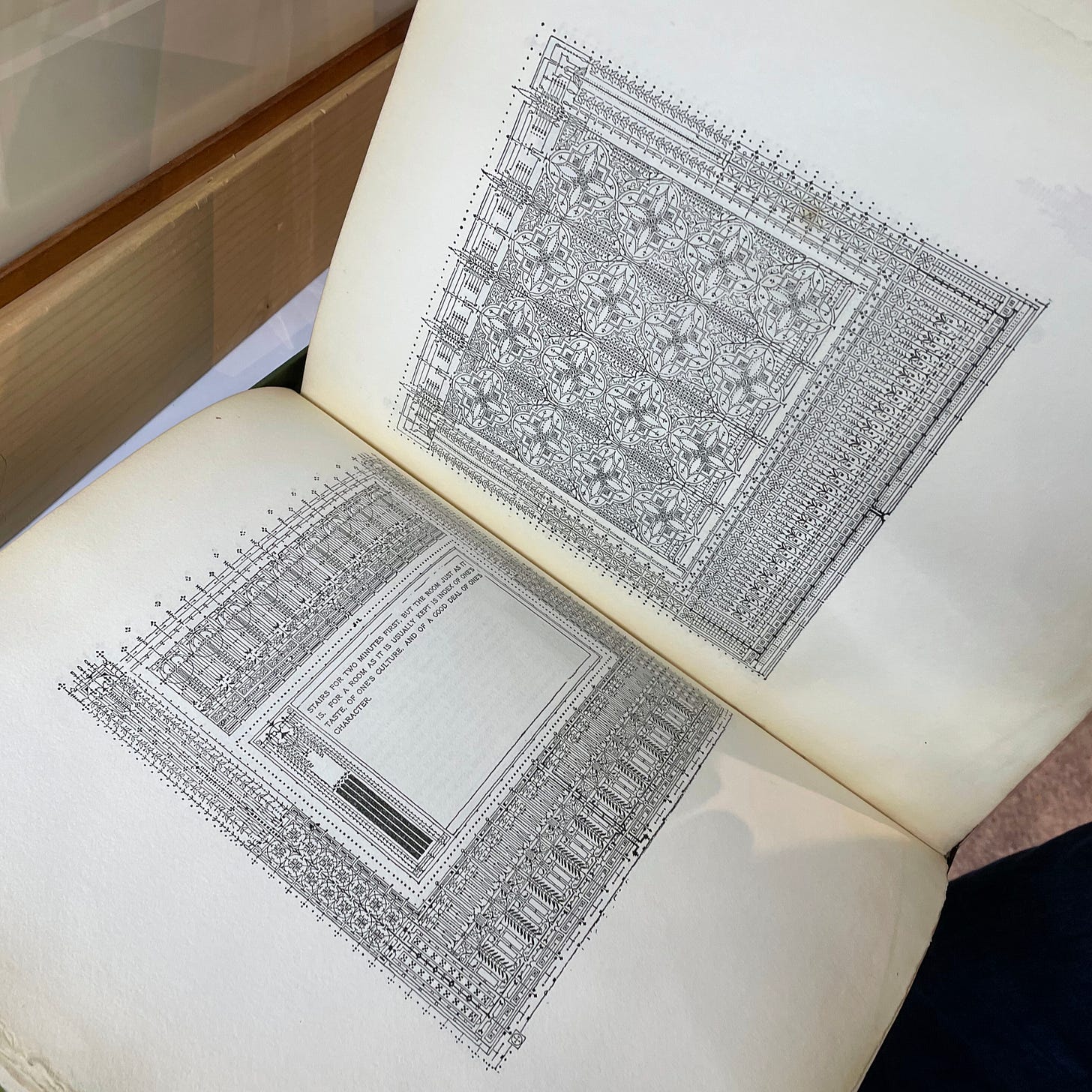


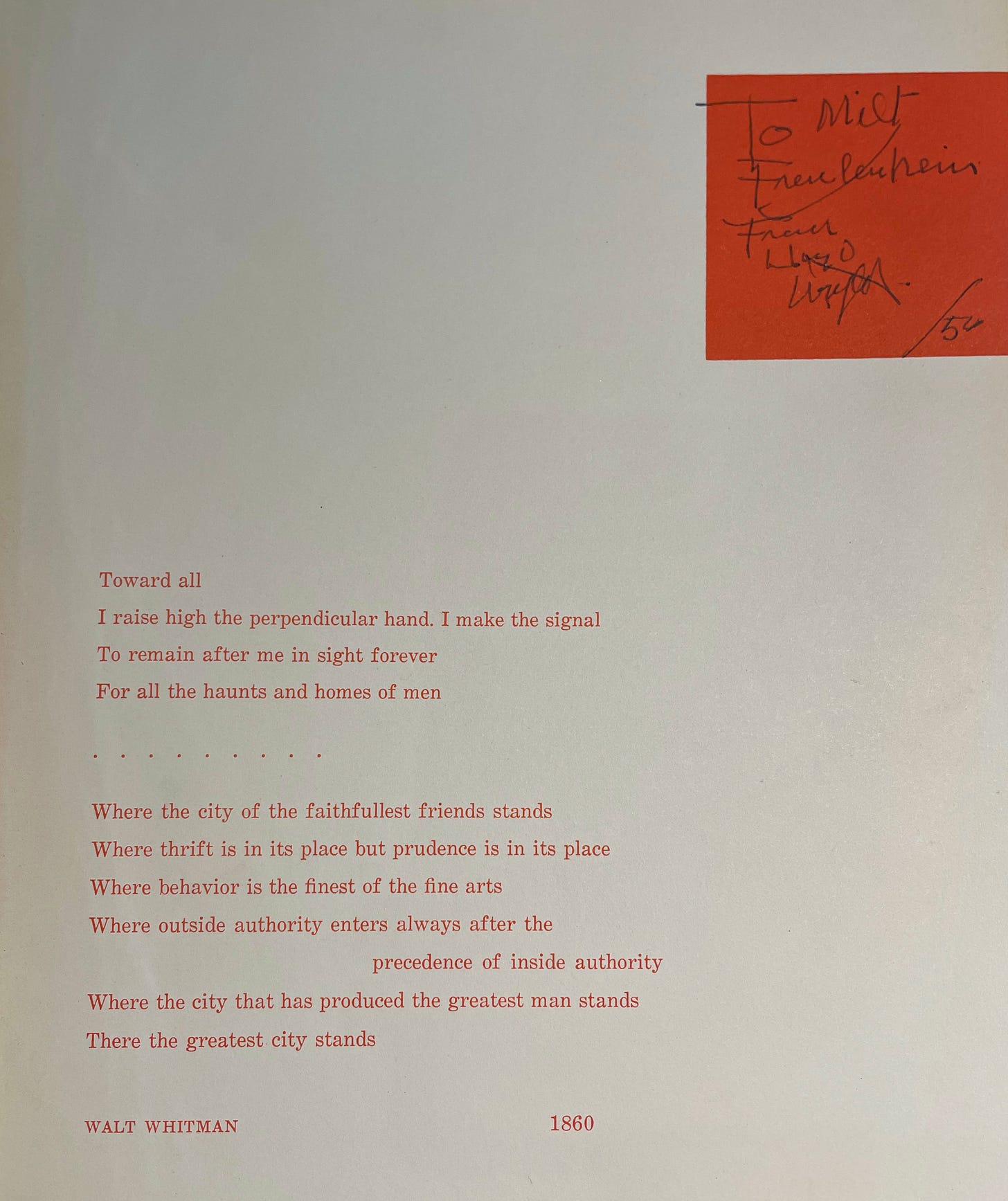


I wasn’t familiar at all with the term Gesamtkunstwerk, but it is one that, although I won’t probably ever be able to pronounce correctly, I’ll think about every time I come across a piece of architectural heritage being threatened by what we’re mistakenly calling progress (at least in developing countries like mine). Thanks for the bonus content by the way!